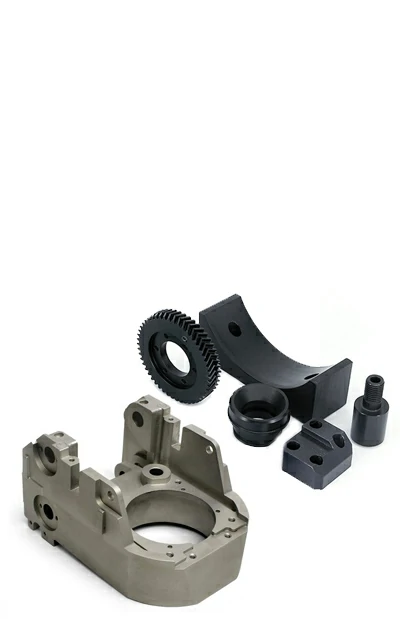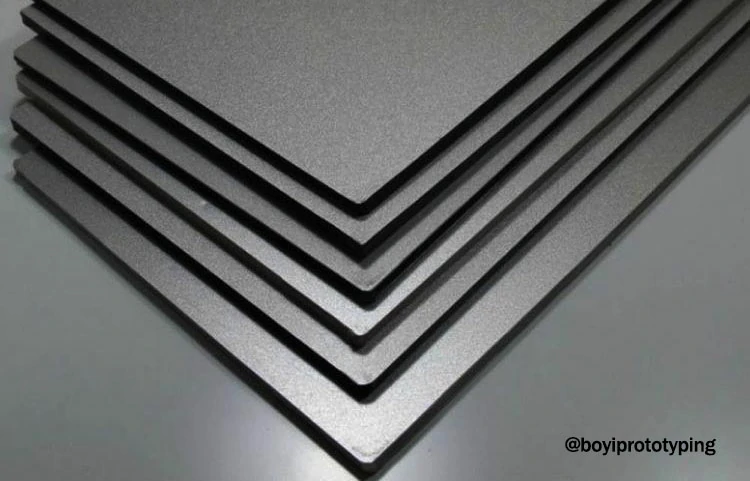
When it comes to injection molding with PVC (Polyvinyl Chloride). Whether you’re a seasoned pro or just starting out, knowing how PVC behaves under heat can make all the difference in your manufacturing process. Let’s dive into the essential details.
Why Melting Points Matter in Injection Molding?
In injection molding, PVC pellets are heated until they reach a molten state, then injected into a mold to form the desired shape. The melting point directly affects how the PVC flows into the mold, how it fills intricate details, and how well it bonds to itself as it cools.
Here’s where things get interesting. PVC’s processing temperature isn’t just about melting; it’s also about avoiding degradation. PVC is sensitive to heat, and if the temperature goes too high—above 260°C (500°F)—the material can start to decompose, releasing hydrochloric acid. This not only affects the quality of your molded part but can also damage your molding equipment.
What is the Melting Point of PVC?

PVC is a versatile and widely used plastic with a melting point that varies depending on its formulation. PVC typically melts at around 100°C to 260°C (212°F to 500°F). However, this range can shift based on the specific type of PVC you’re using, such as unplasticized PVC (uPVC) or plasticized PVC (pPVC).
- Rigid PVC (uPVC): uPVC has a melting point around 85°C (185°F).
- Plasticized PVC (pPVC): pPVC tends to melt at a slightly higher temperature range, approximately 180°C to 210°C (356°F to 410°F).
Optimizing Injection Molding Temperatures
To get the best results with PVC, you’ll want to maintain a consistent temperature that’s high enough to allow good flow but not so high that it risks degradation. Generally, an optimal range for PVC injection molding is between 170°C and 190°C (338°F to 374°F). This range ensures the PVC is molten enough to fill the mold while minimizing the risk of thermal degradation.
Another factor to consider is the mold temperature. Keeping the mold at a temperature of around 50°C to 60°C (122°F to 140°F) can help in achieving better surface finish and dimensional stability.
What is the Melting Point of PVC Pipe?
PVC (Polyvinyl Chloride) pipes typically begin to soften at around 80°C to 85°C (176°F to 185°F). They transition into a fully molten state suitable for molding and extrusion at temperatures ranging from approximately 160°C to 200°C (320°F to 392°F).
How Heat Resistant is PVC?
PVC has moderate heat resistance. It begins to decompose above 200°C (392°F), releasing hydrochloric acid. For high-temperature applications, materials like CPVC are better suited.
Will Boiling Water Melt PVC?
Boiling water, which is typically around 100°C (212°F), will not melt PVC. However, it is close to the lower end of PVC’s softening range, which starts around 80°C to 85°C (176°F to 185°F). Prolonged exposure to boiling water can soften PVC and potentially affect its structural integrity over time, but it won’t cause the material to melt outright.
What Does PVC Stand For?
PVC stands for Polyvinyl Chloride. It is a type of plastic commonly used in construction, plumbing, and various other applications.
Physical Properties of PVC
| Property | Value |
|---|---|
| Density | 1.35 – 1.45 g/cm³ |
| Tensile Strength | 40 – 50 MPa |
| Flexural Strength | 80 MPa |
| Impact Strength (Notched) | 2 – 5 kJ/m² |
| Hardness | 80 – 90 (Shore D) |
| Thermal Conductivity | 0.16 – 0.19 W/m·K |
| Coefficient of Thermal Expansion | 5.4 – 6.2 x 10⁻⁵ /°C |
| Water Absorption | < 0.1% |
| Flammability | Self-extinguishing |

Common Issues and How to Avoid Them
Even with a good understanding of PVC’s melting point, challenges can still arise during injection molding. Let’s explore some common issues in detail and how to prevent them.
1. Why are there black streaks or burnt spots on my molded parts?
This issue, known as scorching, occurs when PVC overheats. If the temperature is too high or the material stays in the barrel for too long, PVC can start to decompose, releasing hydrochloric acid. This leads to black streaks or burnt spots on your molded parts. To avoid this, it’s crucial to maintain the temperature within the recommended processing range for PVC, typically between 170°C and 190°C (338°F to 374°F). Additionally, ensure the material does not remain in the barrel longer than necessary, and regularly clean the equipment to prevent residue buildup.
2. Why do my molded parts have a poor surface finish or weak spots?
Poor surface finish or weak spots often indicate that the PVC wasn’t fully melted. This could be due to the melting temperature being too low or uneven heat distribution in the mold. To solve this, you can slightly increase the injection molding temperature to ensure the PVC is fully melted. Also, pay attention to mold temperature control, keeping the mold temperature around 50°C to 60°C (122°F to 140°F) to achieve a better surface finish and dimensional stability.
3. Why are there bubbles in my molded parts?
Bubbles in molded parts are usually caused by air or volatile substances being trapped in the material. If the temperature during the injection process is too high, the PVC may decompose and release gases, leading to bubbles in the molded part. To prevent this, it’s important to control the temperature carefully to avoid material decomposition. Additionally, ensure the material is thoroughly dried before it enters the injection machine to remove moisture or other volatile substances.
4. Why are my molded parts dimensionally unstable or warped?
Dimensional instability or warping in molded parts is often related to uneven mold temperatures or inconsistent cooling rates. If the mold temperature is too low, the PVC may not fully fill every detail of the mold, leading to dimensional inaccuracies. To prevent this, it’s recommended to keep the mold temperature consistent and to control the cooling process carefully, avoiding rapid cooling that could cause warping.

Conclusion
Injection molding with PVC is all about balance. By understanding and carefully controlling the melting point, you can produce high-quality parts with excellent consistency. Whether you’re making pipes, fittings, or custom components, getting the temperature right is key to success.
If you’re working with PVC in injection molding and need help with optimizing your process, BOYI’s expert team is here to assist. We specialize in delivering precision-molded PVC parts, tailored to your specific requirements, with the expertise to ensure top-notch results every time.

Ready for Your Project?
Try BOYI TECHNOLOGY Now!
Upload your 3D models or 2D drawings to get one on one support
FAQ
PVC begins to soften at temperatures around 80°C to 85°C (176°F to 185°F). At this point, it becomes pliable and can be shaped, but it is not yet in a fully molten state.
PVC can ignite at temperatures between 320°C and 380°C (608°F and 716°F). PVC is inherently flammable, so in high-temperature environments, it’s important to consider fire safety measures.
Schedule 40 PVC can generally withstand temperatures up to around 60°C to 65°C (140°F to 149°F) for continuous use.
PVC pipes can burst at temperatures above 60°C to 65°C (140°F to 149°F), especially under high pressure.
CPVC is used instead of PVC for its higher temperature resistance (up to 95°C or 203°F), better chemical resistance, and increased durability in hot water applications.
PVC can start to leach harmful substances when exposed to temperatures above 60°C to 65°C (140°F to 149°F).
No, PVC is generally not recommended for use in hot water heaters due to its low temperature tolerance. For hot water heaters, materials like CPVC or PEX, which can handle higher temperatures, are more appropriate.
Catalog: Materials Guide

This article was written by engineers from the BOYI TECHNOLOGY team. Fuquan Chen is a professional engineer and technical expert with 20 years of experience in rapid prototyping, metal parts, and plastic parts manufacturing.






